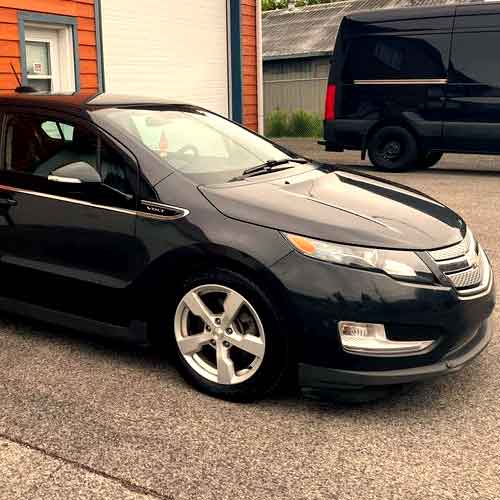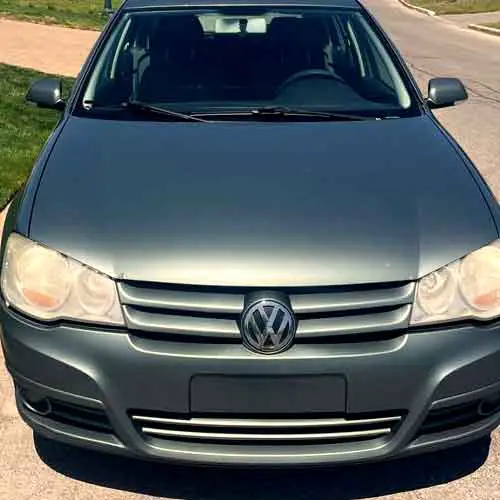Firestone Winterforce 2, with its outstanding snow performance, and Firestone Winterforce 1, known for its excellent handling on icy roads, are ready to compete. Who will emerge as the winner of this frosty showdown? Let’s unravel the mystery!

Wet Traction
Tire performance on wet surface is largely influenced by the tread pattern and rubber texture.
And both Firestone Winterforce 1 and 2, contenders in the winter terrain category, exhibit exemplary performance due to their abundant tread voids and siping.
These voids proficiently disperse water, reducing the risk of hydroplaning and improving wet grip.
But still, if you have to pick one here, go with the Firestone Winterforce 2, as the tire offers slightly sophisticated design of interlocking and straight sipes allows for a more aggressive grip and heightened traction.
Its tread also showcases superior flexibility, enabling the sipes to absorb water particles effectively and create an outstanding suction force.
Although the Firestone Winterforce 1 displays commendable hydroplaning resistance due to its broad grooves and adeptly designed lateral sipes, it doesn’t quite match the prowess of the Winterforce 2 on wet surfaces.
Verdict: The newer Winterforce tire is better overall, though it still lacks in terms of hydroplaning resistance.
Don’t miss on the detailed review of WinterForce 2 here: https://snowytires.com/firestone-winterforce-2-review/
Powdery Snow Performance
Both tires excel in delivering exceptional performance on soft snow, even in harsh wintry conditions.
However, the Firestone Winterforce 1 takes the lead in this category. Its success lies in its unique tread pattern, which features spacious lugs that enable snow-to-snow contact.
The tread voids of the Firestone Winterforce 1 act as snow trappers, effectively capturing snow particles and creating a layer of snow that interacts with the ground as the tire rolls. This results in superior traction since snow adheres better to snow than to rubber.
On the other hand, the Firestone Winterforce 2 adopts a less aggressive approach, especially with heavier snow. Its compact and less assertive tread pattern doesn’t gather snow as efficiently, leading to slightly inferior performance on snowy terrains compared to its predecessor.
Ice Performance
When it comes to icy terrains, the Firestone Winterforce 2 shines as a top performer, as its distinct tread design incorporates angular cuts and V-shaped notches of various sizes and directions.
These features, combined with the tire’s highly siped pattern, ensure quicker braking and superior handling responsiveness on ice.
In contrast, the Firestone Winterforce 1 falls short in this category due to its larger tread voids and fewer notches. These design elements make it less effective at gripping ice compared to its update.
Verdict: The Winterforce 2 offers better directional grip and handling on icy terrains.
Directional Grip
The performance of directional grip is largely dependent on the central area of the tread, which carries the majority of the tire’s load during straight-line driving.
The Firestone Winterforce 2 excels in this aspect, thanks to its more streamlined continuous running central rib. This rib provides a larger contact patch with the ground, enhancing directional grip.
On the other hand, the Firestone Winterforce 1 features in-groove biters or notches in place of a continuous central rib.
While these notches contribute to traction, they also consume rubber that could have contacted the ground and provided better directional grip.
Verdict: The Firestone Winterforce 2 demonstrates shorter braking distances, a direct measure of superior directional grip.
Handling
The handling capabilities of a tire, particularly lateral traction, heavily rely on the performance of its shoulder lugs. These lugs play a crucial role in adhering to the road surface as the tire navigates corners.
In this regard, the Firestone Winterforce 1 holds an advantage due to its less deep tread and denser shoulder lugs. The compact shoulder design of this tire ensures superior road contact during cornering, as more shoulder lugs engage with the road surface.
The shallower tread depth of the Firestone Winterforce 1 also reduces the likelihood of the lugs flexing or bending during cornering, resulting in a more balanced steering feedback and superior handling.
On average, tests show that the Firestone Winterforce 2 lags behind by approximately one second in lap times, indicating its slightly inferior handling performance.
Fuel Economy
Fuel efficiency is closely tied to a tire’s rolling resistance, which refers to the “stickiness” of the tread against the road.
In this aspect, the Firestone Winterforce 2 takes the lead, despite its similar weight and tread design.
The shallower tread depth and slightly harder rubber compound of the Firestone Winterforce 2 contribute to reduced flexibility and bending of the lugs during cornering, braking, or acceleration. This leads to less heat generation and overall energy expenditure, enhancing fuel efficiency.
On the other hand, the predecessor falls short in the fuel economy department due to its design and rubber composition.
Tread Life
Winter tires often face challenges in terms of tread life due to their softer rubber composition, which tends to wear more quickly. Consequently, both Firestone tires exhibit similar performance in this area, which can be considered average.
The Firestone Winterforce 1’s thermally adaptive rubber, designed to handle harsh winter temperatures, is more prone to faster wear. However, the tire’s deeper tread depth provides similar mileage before reaching the legal limit of 2/32″ tread depth.
Therefore, despite its rubber wearing down more quickly, the Firestone Winterforce 1 manages to keep pace with its update, in terms of tread life.
Vibration Absorption
Tires can be seen as the secondary suspension system of a vehicle, playing a role in absorbing road imperfections, where both the internal and external build come in to play.
In this aspect, the Firestone Winterforce 2 excels, thanks to its advanced compound.
The tire’s new gen compound offers better thermal adaptability on snowy terrains and provides superior cushioning against road disturbances. As a result, the tire delivers a remarkably smoother ride.
On the other hand, the Firestone Winterforce 1 doesn’t quite match up in terms of vibration absorption due to its stiffer tread compound.
Verdict: The newer model is better.
Noise Generation
Tire noise is predominantly generated by air entering through the sides or shoulder voids and hitting the walls, resulting in unwanted sound waves. This noise is further amplified by in-groove resonance, where echoing occurs.
Having said that, the softer compound of the Winterforce 2 makes it more susceptible to generating larger resonance values.
So does that mean, its a louder tire?
Well, not really.
The thing is, Winterforce 2 utilizes advanced pitch sequencing technology, which involves variations in tread block geometry, generating different sound frequencies that effectively cancel each other out, reducing “resonance” noise.
To Conclude
In summary, both tires perform admirably across a range of conditions, with each showcasing specific strengths.
The Winterforce 2 excels in wet traction, ice performance, directional grip, and vibration absorption, largely due to its advanced tread design and rubber composition.
On the other hand, Winterforce 1 leads in powdery snow performance, handling, and noise reduction, courtesy of its unique tread pattern, dense shoulder lugs, and advanced noise reduction technology.
And yes, in terms of tread life and fuel efficiency, both tires offer similar performances.







